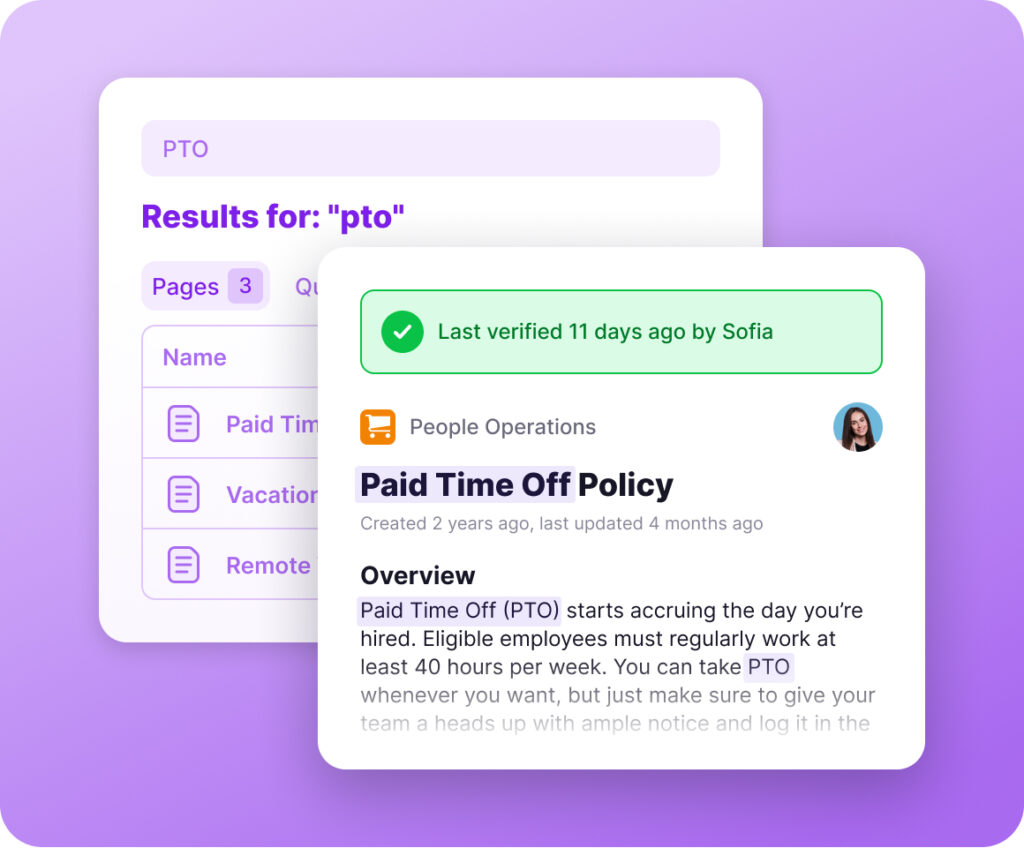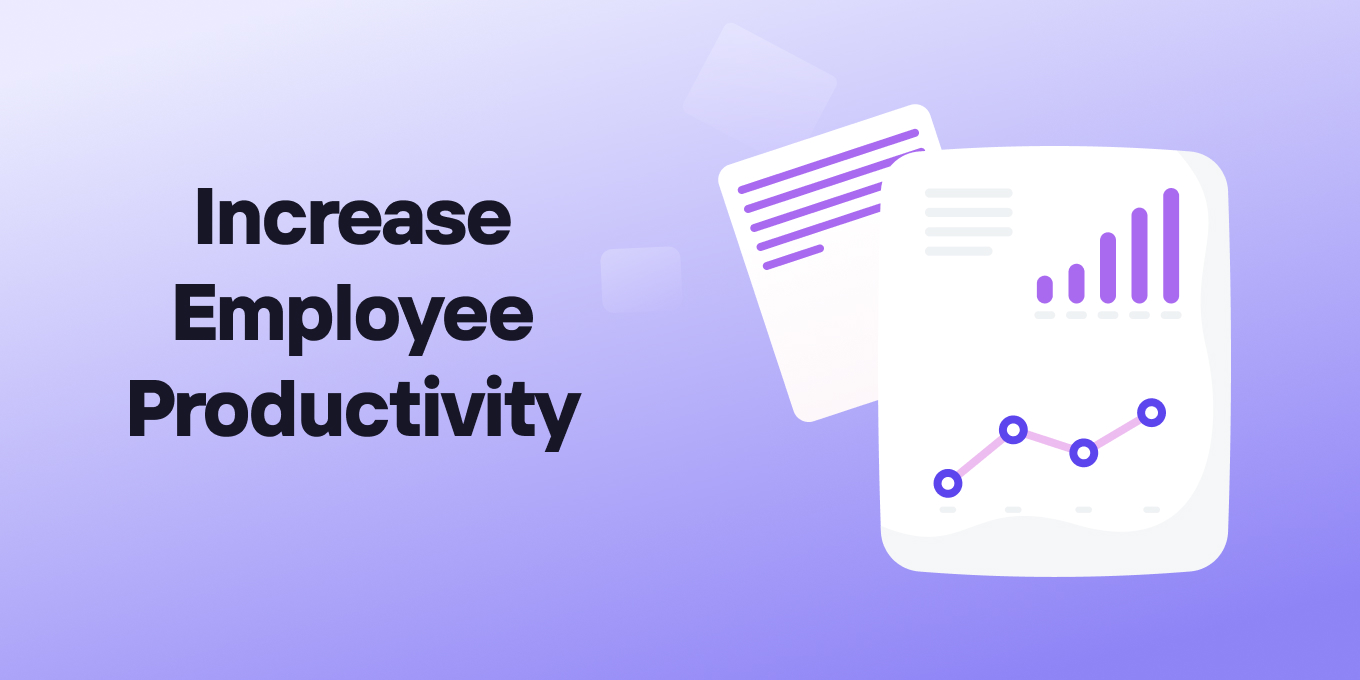Data from the U.S. Bureau of Labor Statistics shows labor productivity for nonfarm businesses dropped by 2.1% in Q1, 2023.
That’s a big problem.
Employee productivity is a powerful lever for profitability. The more your employees get done, the more you earn.
To improve employee productivity, you need a strategy and proactive effort. If you’ve decided to take action to increase employee productivity, we’ve got your back.
Why is increasing employee productivity important?
Employee productivity is important to:
- Run a profitable business
- Achieve and sustain growth
- Stay competitive
- Meet customer expectations
- Build a culture of excellence
It’s important to talk about effectiveness and quality when speaking of improving productivity. If a team member rushes through work, they’ll get more done.
Are they more productive? Sure. But are they effective? Not quite.
- Productivity refers to the amount of work employees complete
- Effectiveness refers to the amount of effort employees put in
It’s easy to see how focusing on just one aspect of employee performance can adversely impact the other.
Instead of focusing on either, aim to strike a balance. The goal is to encourage employees to put maximum effort in minimum time.
How can you improve employee productivity?
Better workplace productivity requires system and process-level changes. If you believe your team isn’t at its productive best, here are a few steps you can take:
1. Optimize emails and reduce meeting frequency
A recent Microsoft report suggests that 25% of its most active business users spend an average of 8.8 hours a week reading and writing emails. These users spend another 7.5 hours a week in meetings.
That’s per employee. Think about the man-hours you lose because of ineffective communication.
To claim back productivity levels lost to emails and meetings:
- Reserve a daily slot for emails: Suppose you want employees to spend a maximum of 5 hours a week on emails. Have all teams check emails and respond to them during a specific time window each day. For example, this could be 30 minutes before lunchtime and 30 minutes before wrapping up for the day.
- Reduce and shorten meetings: Don’t schedule a meeting that can be an email. You might consider async tools to reduce the number of meetings per month. When you schedule meetings, keep them short. Ideally, no more than 15 minutes.
2. Provide training
Employee training gives your workers the knowledge and experience needed to work more efficiently.
For example, you can train your bookkeeper to use a bookkeeping solution powered by intelligent document processing (IDP) and AI.
Using these tools will help the bookkeeper complete work faster.
Consider providing hands-on training. This shortens the learning curve and enables employees to implement the tools they learn.
3. Invest in helpful technology
Technology enables employees to get things done faster. According to a study by the Massachusetts Institute of Technology and Stanford University, generative artificial intelligence (AI) can increase productivity by up to 14%.
For example, senior developers can use AI to write and debug code. Sales teams can analyze communication with SQLs using a combination of speech-to-text and natural language processing (NLP).
The possibilities to increase productivity using AI are endless.
New tools come with a learning curve, but creating documentation for knowledge sharing can make things easier.
Add information on how your team can use the tools and technologies you’ve invested in. Share the documentation during onboarding to get new hires up to speed with your systems.
4. Emphasize company culture
A company culture that encourages teamwork breeds productivity.
A study found that employees perform complex tasks more efficiently as a group than as individuals.
To build a culture that values teamwork, hire employees that are a cultural fit. Hiring employees that thrive in teams can improve retention.
They’re more likely to build relationships faster because they’re comfortable in a group environment. And as McKinsey explains, well-connected teams are 20-25% more productive.
These employees are also less likely to be overwhelmed by large teams and highly productive teammates.
5. Set clear goals
Setting goals provides employees with a well-defined path. Communicating goals clearly gives them insights into:
- Where the company is
- Where it wants to be
- Their role in getting the company there
According to The State of High Performing Teams in Tech 2022 report, 59% of tech workers think clear expectations and goals are the most important factor contributing to high productivity.
Don’t just email employees a list of goals. Walk them through their specific role in achieving these goals. Explain how these goals will help the company.
6. Resist micromanaging
Micromanaging can do a number on productivity. It has been proven to stifle creativity and productivity in the long run.
For example, a joint study by Harvard Business School professor Teresa Amabile and psychologist Steven Kramer shows the ill effects of micromanagement on employee morale and productivity.
Instead of micromanaging, hire employees you can trust.
Give these employees tasks you believe they’ll be able to handle. Provide guidelines and define the outcomes. Then, allow them to work as independently as possible to improve productivity.
7. Seek feedback on communication
A survey commissioned by Forbes Advisor found that ineffective communication impacted productivity for 49% of respondents.
Effective communication — in-person or online — is critical for efficient teamwork and collaboration.
For example, you can share access to an online knowledge base containing client information with clients for easier collaboration. Your clients can view, print, edit, or comment on these pages. No back and forth over email.
Using internal communication software is great. But you must standardize the way your colleagues communicate. Define the tools to use.
“With no agreement on what communication channel to use, workers are forced to check all digital messaging platforms to ensure that nothing slips through the cracks. That’s toxic to productivity.”
Source: HBR
More importantly, seek feedback. Are the communication tools working well? Should any type of communication be moved from emails to Slack?
What are the benefits of increasing employee efficiency?
Here are some key benefits of increased employee productivity and workplace efficiency:
1. Increased profitability
Payroll is often the biggest cost on the income statement, especially for service-based businesses.
Increasing employee productivity can help increase revenue while keeping payroll costs unchanged.
For example, if your sales reps are more productive, they’ll generate more revenue for the business.
Increased employee productivity can also reduce costs. For example, if your accounting team is more productive, you can stop outsourcing bookkeeping.
2. Less stress
The relationship between stress, engagement, and productivity is no secret. Stress causes employees to zone out and feel disengaged. Low employee engagement can be a major productivity killer.
Gallup analyzed 112,313 business units across 96 countries. They found a strong link between employee satisfaction/engagement and performance outcomes, including productivity and profitability.
This isn’t to say you shouldn’t hold employees accountable when they miss deadlines. Low levels of stress are good for productivity.
The dependency between stress and productivity is explained by the Yerkes-Dodson law. Put simply, the law explains:
- Zero stress can cause employees to get bored
- Optimal levels of stress help employees be more productive
- High levels of stress cause anxiety
Getting things done on time is good for business and the bottom line, as well as your team’s professional and mental well-being.
3. Better customer service
Top-notch customer service helps you stand out from the crowd.
Providing great support requires the support team to go the extra mile. And for that, the support team needs to be highly productive.
For example, a highly productive team can respond to tickets faster. They can be more proactive in following up to see if the customers’ problems were resolved.
The result? Better customer experience and higher lifetime values.
4. Build a culture of productivity
A productive team or leader inspires other teams to get more done. When everyone, from top executives to junior staff, is striving to be productive, excellence becomes a culture. Employee productivity increases.
New hires will see how meeting deadlines is a norm at your company. This will encourage them to buy into this culture of excellence and be more productive.
When possible, recognize and reward highly productive employees. Show them you value productivity and communicate how they contribute to the company’s success.
What is a productivity improvement plan?
A productivity improvement plan is a strategic approach to improving your team’s productivity.
W. Edwards Deming, a renowned statistician and management consultant, argues in his book Out of the Crisis that 94% of most problems and possibilities for improvement belong to the system.
This applies to improving productivity as well. A productivity improvement plan involves taking steps to tweak systems and processes that stand in the way of productivity.
For example, your productivity improvement plan might include system and process-level changes like:
- Streamline processes: Eliminate bottlenecks in internal processes and standardize them.
- Digitize your business: Invest in robotics, AI, and other software solutions.
- Define goals and monitor progress: Define productivity goals and track progress by identifying key performance indicators (KPIs).
- Invest in training: Train employees on new systems and soft skills.
How Tettra Can Help With Productivity

What’s our policy on this? Or that?
If your team is constantly responding to the same questions over and over, then you need a centralized knowledge base to store your team’s knowledge.
And it’s not just about the time off policy or requesting reimbursements. It’s about sharing, saving, and storing your company’s culture, workflows, best practices, and processes.
We all know what happens when that key employee heads for the door. Lots of knowledge is lost.
Documenting your knowledge in Tettra will help you keep in front of mind for your team, providing a place to find answers to their most common questions.
Tettra offers a full suite of tools for sharing knowledge. With Tettra, you’ll get:
- Q&A workflow to capture questions
- AI-powered knowledge base software to document answers
- Knowledge management features to keep content up to date.
- Integrations with Slack, MS Teams, Google Docs, Github and Zapier to help your team answer and capture knowledge quickly
Start today for free.


